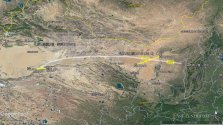The Defense Intelligence Agency (DIA) of the US says China
may have developed hypersonic missile that can hit American bases in the Pacific:
Quoting from the article:
China is ahead of Russia in development of hypersonic weapons and may have already deployed a weapon capable of hitting US bases in the Pacific, the Defence Intelligence Agency said.
Not sure what the statement is trying to imply, since China has been operating hypersonic missiles that can hit American bases in the Pacific for a number of years now, i.e. DF-17. In fact, all US bases within and around the First Island Chain can be targetted by DF-17.
Unless, the DIA is refering to the DF-27 HGV, which is purported to have a range of 5000-8000 kilometers. In that case, the "American bases in the Pacific" could be those located along the Second and Third Island Chains, i.e. Guam, Wake, Oahu and Anchorage.
China is also pursuing an intercontinental ballistic missile tipped with a hypersonic glide warhead that’s been tested since 2014, Paul Freisthler, the chief scientist for DIA’s analysis division, told a House Armed Services subcommittee on Friday. In July 2021, the weapon showed it could circumnavigate the globe, he said.
That would be the FOBS-HGV combination which the Pentagon has claimed to "violate the laws of Physics (lmfao)".
“While both China and Russia have conducted numerous successful tests of hypersonic weapons and have likely fielded operational systems, China is leading Russia in both supporting infrastructure and numbers of systems,” Freisthler said of the weapons.
That's an interesting (though not exactly surprising) statement.
Though, China is still behind Russia in terms of HCM development, since China is not known to field hypersonic missiles that are similar to Russia's Zircon.

